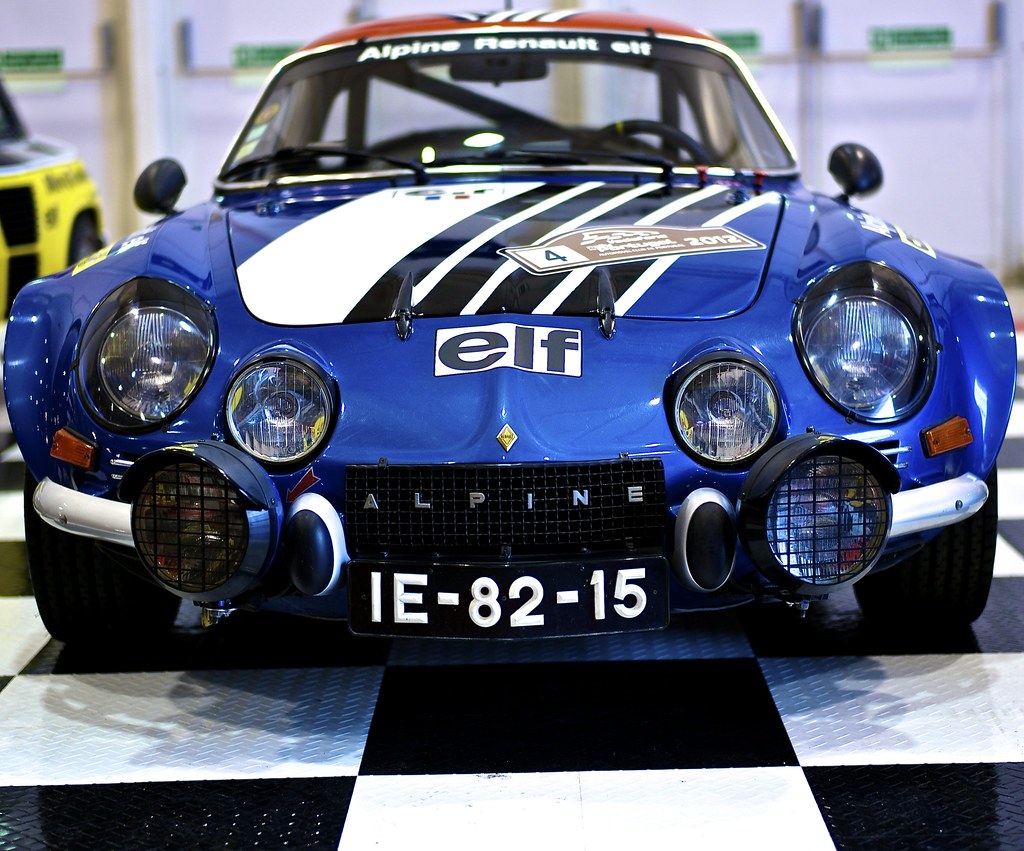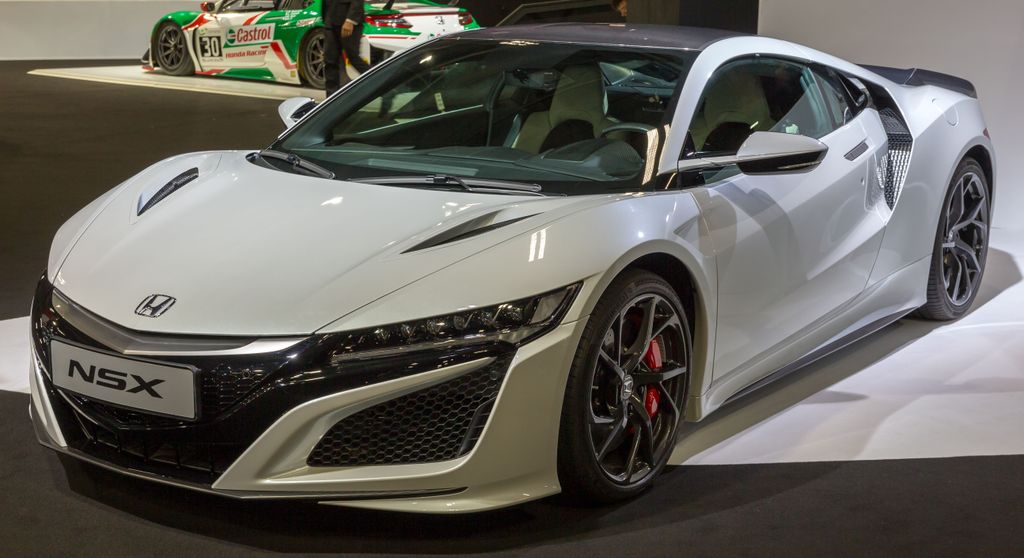
The allure of a car so incredibly powerful, so meticulously engineered, that it’s deemed too wild for public roads in the United States, is a fascinating subject for any automotive enthusiast. It taps into what psychologists term the ‘Forbidden Fruit Effect’—a heightened desire for something just out of reach, something unattainable. For decades, American car lovers have watched from afar as some of the world’s most thrilling supercars remained forbidden territory, casualties of stringent regulatory standards or simply never designed with street legality in mind. These machines, often born from audacious projects and groundbreaking innovation, carry a mystique that only grows stronger with their exclusivity.
The reasons behind these bans are as diverse as the cars themselves, typically stemming from a complex interplay of differing manufacturing requirements for safety and environmental concerns. While European and Japanese automakers crafted these future classics, the immense effort and expense of re-engineering them to conform to specific U.S. regulations—such as extensive crash testing or emissions certification—often proved commercially unviable for limited production runs. This led to a peculiar situation where some of the most advanced and performance-oriented vehicles ever created simply couldn’t touch American asphalt, much to the chagrin of eager enthusiasts.
Today, we embark on an in-depth exploration of a selection of these automotive legends. We’ll delve into the engineering marvels that defined them, the specific regulatory hurdles they faced, and in some cases, the ingenious ways a few of them found a path to legality—or remain tantalizingly out of reach. From purpose-built track monsters to bespoke customs, prepare to uncover the stories behind some of the most captivating cars that proved too extreme, too non-compliant, or simply too unique for the streets of the USA.
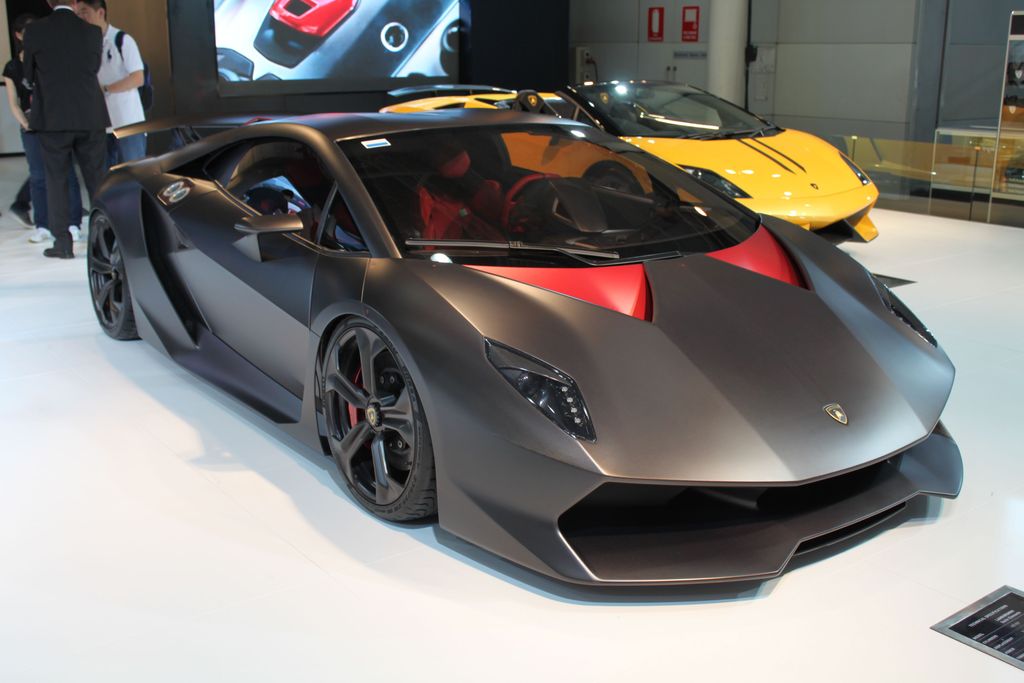
1. **Lamborghini Sesto Elemento**Imagine harnessing 570 horsepower in a vehicle that weighs less than your average compact car—a staggering achievement in power-to-weight ratio. The Lamborghini Sesto Elemento is precisely this kind of marvel, channeling its immense power from a 5.2L V10 engine, catapulting it from 0-60 mph in a breathtaking 2.5 seconds. Its radical construction, primarily from carbon fiber, was not just for aesthetics but a deliberate pursuit of an unmatched lightness that conventional supercars simply couldn’t achieve. This car was never intended for anything but the track, a fact explicitly reflected in its design philosophy.
Lamborghini made no apologies for deliberately omitting essential safety features typically required for street legality, such as airbags, ABS (Anti-lock Braking System), and stability control. These omissions were strategic, aimed squarely at minimizing weight to the aggressive target of 2202 lbs. If you were seeking luxury amenities, the Sesto Elemento’s cabin would offer a stark surprise with its deliberate absence of comfort. Exposed carbon fiber dominates throughout the interior, with seats reduced to simple foam pads attached directly to the carbon tub, offering minimal adjustment. Even sound insulation was sacrificed in this relentless pursuit of weight reduction, making every drive an unfiltered, visceral rush. This design principle made it inherently illegal for public roads in the United States from its inception.
Car Model Information: 2021 Lincoln Navigator Reserve
Name: Lamborghini Sesto Elemento
Manufacturer: Lamborghini
Related: Lamborghini Gallardo
Production: 2012 (20 produced)
Assembly: Sant’Agata Bolognese
Designer: Filippo Perini
Class: Track day car
BodyStyle: coupé
Layout: Mid-engine, four-wheel-drive layout
Engine: Lamborghini V10
Transmission: automated manual transmission
Wheelbase: 2560 mm
Abbr: on
Length: 4580 mm
Width: 2045 mm
Height: 1135 mm
Weight: 999 kg
Sp: uk
Categories: All articles with unsourced statements, Articles with short description, Articles with unsourced statements from August 2024, Articles with unsourced statements from June 2025, Articles with unsourced statements from May 2022
Summary: The Lamborghini Sesto Elemento (“sixth element”) is a high-performance limited edition car produced by the Italian automobile manufacturer Lamborghini, which debuted at the 2010 Paris Motor Show. The Sesto Elemento’s name is a reference to the atomic number of carbon, referring to the carbon fibre used in its construction.
Get more information about: Lamborghini Sesto Elemento
Buying a high-performing used car >>>
Brand: Lamborghini Model: Sesto Elemento
Price: $39,193 Mileage: 92,317 mi.
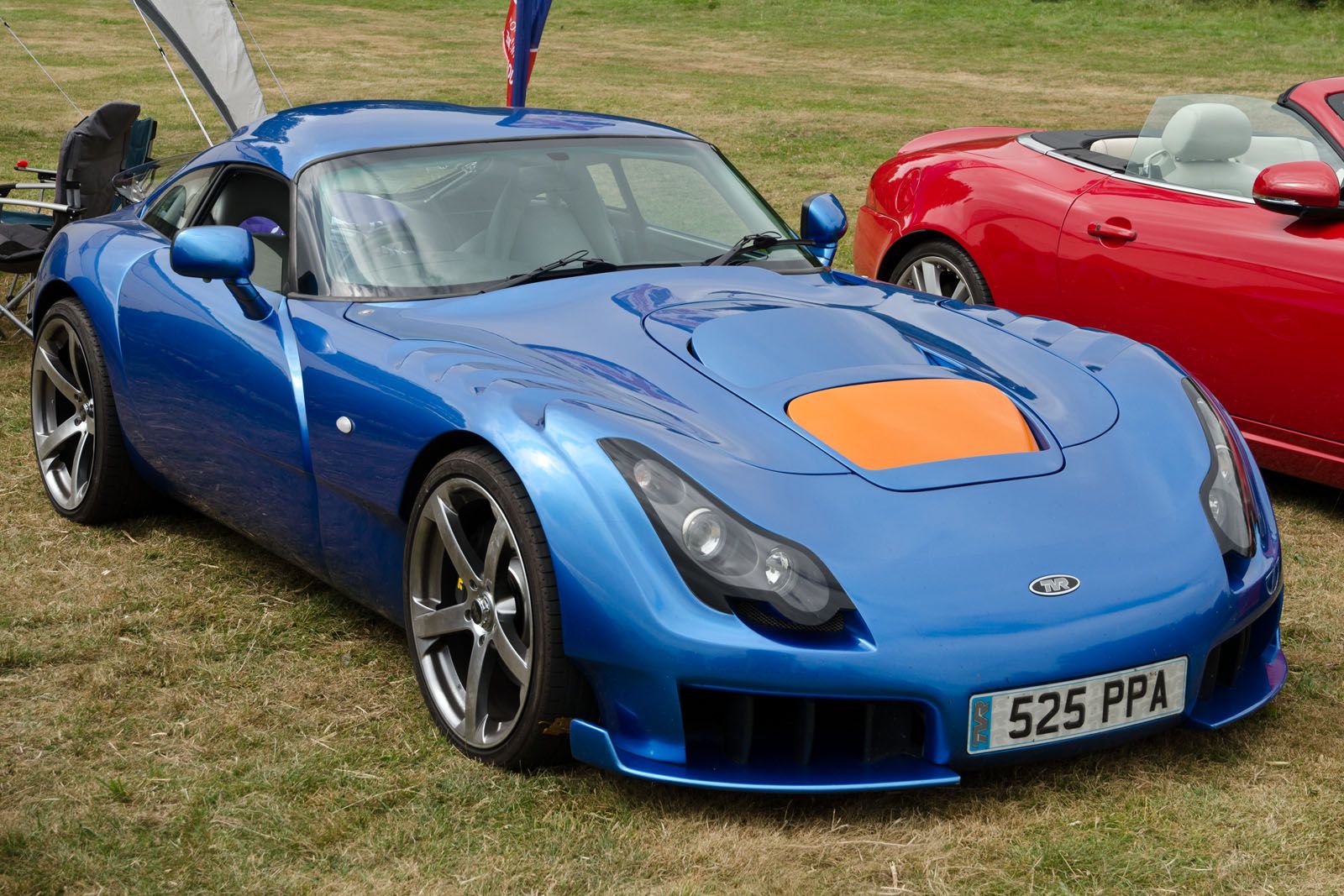
2. **TVR Sagaris**For drivers weary of electronic systems mediating their connection to the road, the TVR Sagaris presented a pure, undiluted driving experience. This British-built machine delivers a potent 400 horsepower, famously achieving this without a single electronic driving aid or stability system—features that most modern manufacturers consider absolutely essential. TVR’s philosophy was clear: to forge an unfiltered connection between driver inputs and vehicle response, demanding unparalleled skill and attention from behind the wheel. It was a bold rejection of automotive digitalization, celebrating raw mechanical engagement.
Unsurprisingly, given its purist design, the Sagaris was never officially sold in the United States and was explicitly listed as ineligible by the National Highway Traffic Safety Administration (NHTSA). Its fundamental lack of modern safety systems, coupled with its non-compliance with US emissions equipment standards, rendered it unable to meet the strict regulatory requirements for road use in America. The cabin of the Sagaris is a testament to British eccentricity blended with racing functionality. It features hand-crafted leather covering minimalist seats designed to place drivers in an optimal race-inspired position. The dashboard’s unconventional switch arrangements, including a signature starter button hidden under a flip cover, added theatrical flair to a driving experience that was as unique as it was demanding.
Read more about: Warning! These 8 Dream Sports Cars Could Become Your Worst Nightmare Before 70,000 Miles
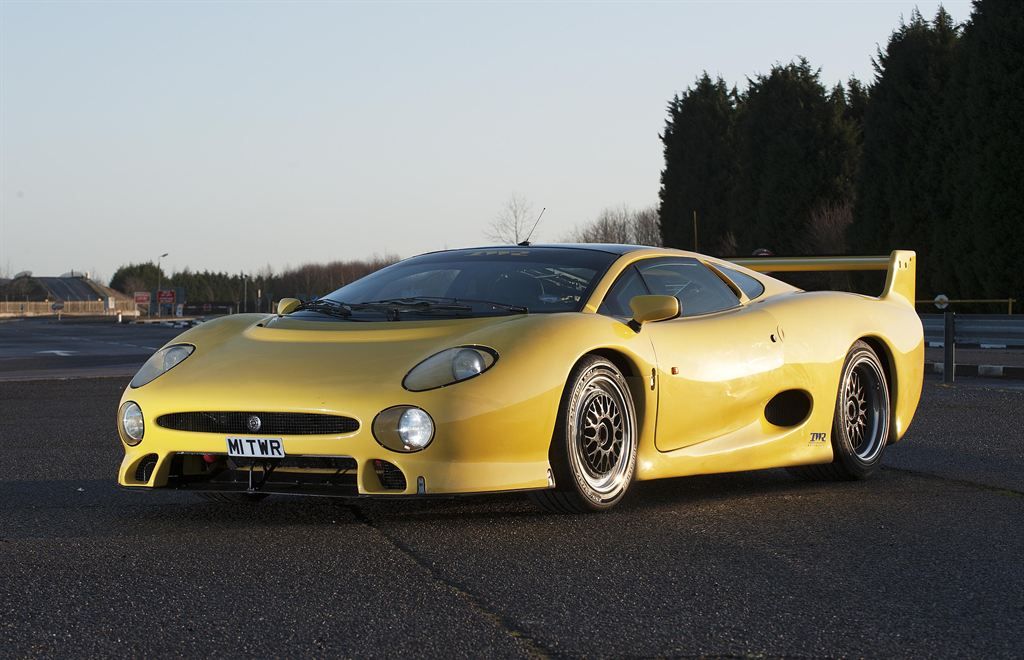
3. **Jaguar XJ220S**In an automotive era where reaching 150 mph was considered exceptional, the Jaguar XJ220S casually shattered expectations by blazing past 212 mph. This Le Mans-inspired variant of the already formidable XJ220 was an exercise in pure velocity, with Jaguar engineers stripping away every component that didn’t directly contribute to speed. This meant discarding many safety features that modern regulations require, making the resulting performance machine intrinsically unsuitable for public roads in most jurisdictions without extensive and costly modifications.
The XJ220S was an incredibly exclusive, limited-production vehicle, with only six examples ever manufactured. It was not conceived as a general production vehicle but rather as a specialized track machine, a race-derived special edition destined for collectors and circuit use. Consequently, it was never street-legal in the U.S. due to its lack of certification. The interior further emphasized its racing pedigree: Jaguar replaced the standard XJ220’s already spartan cabin with competition-spec components. Racing bucket seats equipped with multi-point harnesses offered superior support during high-g cornering, and the simplified dashboard contained only essential information, augmented by auxiliary gauges monitoring critical engine parameters. A small-diameter racing steering wheel, devoid of power assistance, ensured unfiltered feedback directly from the road.

4. **Porsche Carrera 4 Lightweight**For the enthusiast who craved Porsche’s legendary handling without any compromises, the Carrera 4 Lightweight delivered an unadulterated experience, though explicitly not for public roads. This specialized Porsche was a masterclass in combining advanced all-wheel drive with a dramatically reduced curb weight, resulting in truly exceptional handling characteristics. It was a testament to Porsche’s engineering prowess, demonstrating what could be achieved when the constraints of street legality were deliberately set aside in favor of ultimate track performance.
Crucially, the Carrera 4 Lightweight was never intended to be a road car denied road use; it was purpose-built as a race car from the outset. This is underscored by a significant detail: it lacks a 17-digit VIN (Vehicle Identification Number), meaning it wasn’t even legal in most of Europe. Its exclusion from public roads wasn’t a case of being ‘too extreme’ in a challenging regulatory environment, but rather a simple matter of it being designed exclusively for circuit competition. The interior vividly reflects this racing purpose, with a full roll cage immediately signaling its track-focused intentions. Aggressively bolstered competition seats with multi-point harnesses secure the driver firmly, while minimalist carbon fiber door panels with fabric pull straps replace conventional handles, and the simplified dashboard retains only essential gauges, eliminating all non-critical controls and comfort features.
Car Model Information: 2017 Nissan Rogue SV
Name: Porsche 964
Caption: Porsche 911 Turbo 3.3 (964)
Aka: Porsche Carrera
Manufacturer: Porsche
Class: Sports car
Layout: RR layout,R4 layout
Production: 1989–December 1993 , 63,762 built
Related: Ruf RCT
Predecessor: Porsche 911 (classic),Porsche 911 (930)
Successor: Porsche 993
BodyStyle: coupé
Engine: ubl
Wheelbase: 2270 mm
Abbr: on
Length: 4275 mm
Width: convert
Height: convert
Transmission: Tiptronic,Automatic transmission
Assembly: Baden-Württemberg,Stuttgart
Designer: Benjamin Dimson (1985, 1986)
Categories: 1990s cars, All-wheel-drive vehicles, All Wikipedia articles needing clarification, Articles with short description, CS1 maint: archived copy as title
Summary: The Porsche 964 is a model of the Porsche 911 sports car manufactured and sold between 1989 and 1994. Designed by Benjamin Dimson through January 1986, it featured significant styling revisions over previous 911 models, most prominently the more integrated bumpers. It was the first car to be offered with Porsche’s Tiptronic automatic transmission and all wheel drive as options.
Get more information about: Porsche 911 (964)
Buying a high-performing used car >>>
Brand: Porsche Model: Carrera 4 Lightweight
Price: $12,988 Mileage: 83,421 mi.
Read more about: Buckle Up, Buttercup! These 15 Iconic Rides Totally Defined the ’70s – Did YOU Cruise in Any of Them?
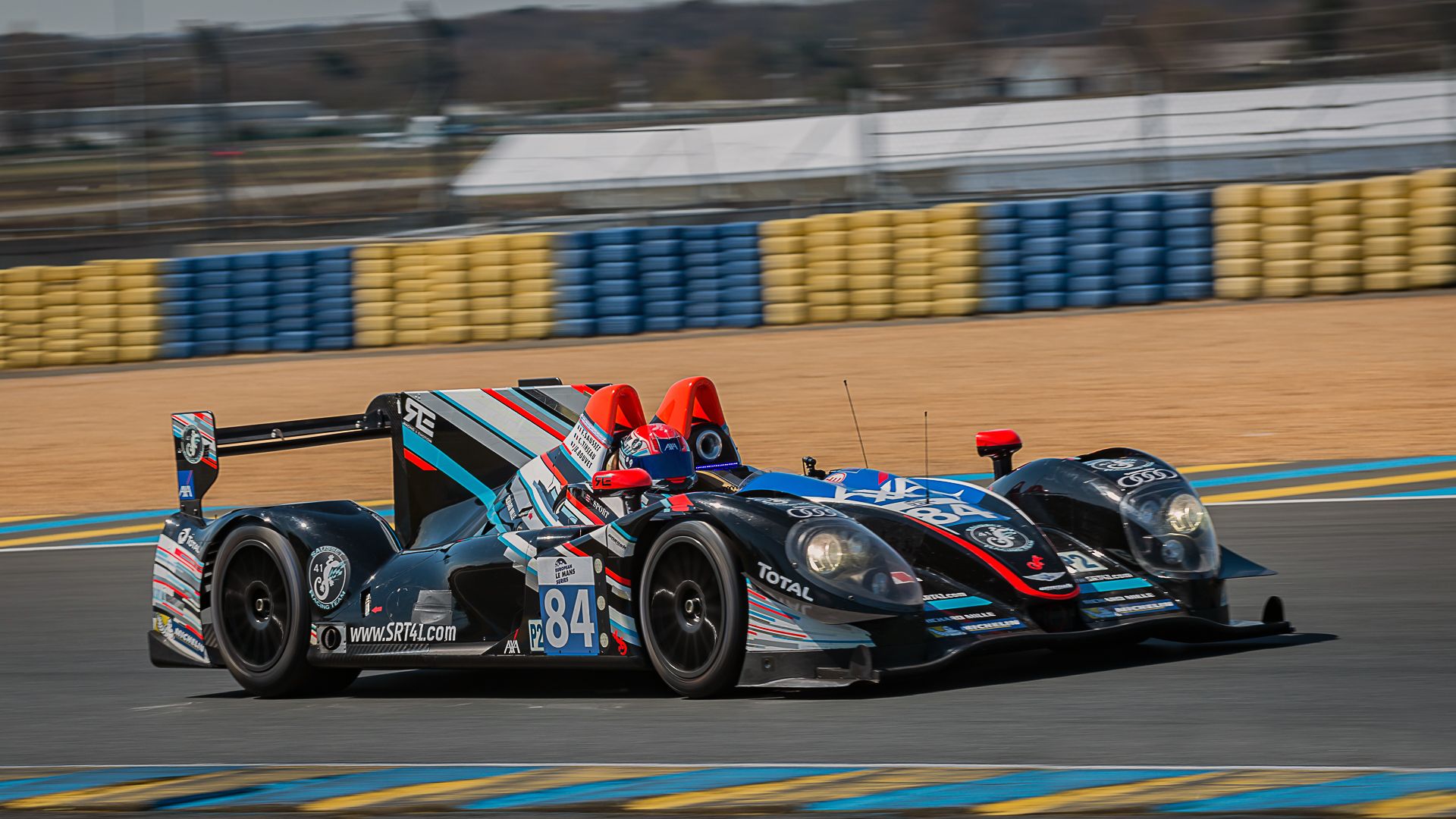
5. **Morgan Le Mans ’62 Prototype**The Morgan Le Mans ’62 Prototype stands as a beautiful anomaly, a car caught between the timeless elegance of vintage styling and the rigorous demands of modern performance and safety standards. This particular model was not a regular production vehicle but a special edition prototype, meticulously crafted to evoke a bygone era of motorsport. Despite its appealing blend of retro design and contemporary power, it crucially lacked many essential safety features required for road registration in most modern jurisdictions. These fundamental omissions solidified its status as a non-compliant vehicle for public road use.
As a result, this exquisite concept car remains confined to private tracks and exclusive collections, unable to legally grace public highways. Stepping into the cabin of the Morgan Le Mans ’62 Prototype is like a journey back in time, transporting occupants to a romanticized era of motorsport. Hand-finished wooden dashboard panels house classic Smiths instruments, providing essential information with an undeniable vintage charm. The large-diameter, thin-rimmed, leather-wrapped steering wheel necessitates deliberate inputs, engaging the driver in a direct, almost conversational, interaction with the front wheels. Bucket seats, trimmed in period-correct materials, prioritize historical authenticity over modern ergonomics, subtly reminding occupants of the compromises gladly accepted by the racers of its inspiring era.
Car Model Information: 2017 Nissan Rogue SV
CarName: Ligier JS P2
Caption: Meyer Shank Racing
Category: Le Mans Prototype
Constructor: Onroak Automotive
Predecessor: Morgan LMP2
Successor: Ligier JS P217
Designer: Nicolas Clémençon
Team: flagicon,TDS Racing,flagicon,Krohn Racing,flagicon,Extreme Speed Motorsports,flagicon
Chassis: Carbon-fiber-reinforced polymer,monocoque
FrontSuspension: Double wishbone suspension
RearSuspension: Same as front
Width: 2000 mm
Abbr: on
Wheelbase: 2865 mm
Length: 4610 mm
Weight: 900 kg
EngineName: Nissan,Nissan VK engine#VK45DE
Power: 500 hp
EnginePosition: longitudinal engine,mid-engine design
GearboxName: Xtrac
Gears: 6-speed
Type: sequential manual transmission
Tyres: Michelin,Dunlop Tyres
Fuel: Various
Lubricants: Various
Debut: 2014 24 Hours of Le Mans
FirstWin: 2014 6 Hours of Fuji
LastWin: 2020 4 Hours of Buriram
LastEvent: 2020 4 Hours of Buriram
Races: 78
Podiums: 81
Wins: 24
DriversChamp: 2015 FIA World Endurance Championship,2016-17 Asian Le Mans Series,2018-19 Asian Le Mans Series,2018-19 Asian Le Mans Series
TeamsChamp: 2015 FIA World Endurance Championship,2016-17 Asian Le Mans Series,2018-19 Asian Le Mans Series,2018-19 Asian Le Mans Series
Poles: 33
FastestLaps: FIA World Endurance Championship,European Le Mans Series,Asian Le Mans Series
Categories: 24 Hours of Le Mans race cars, Articles with short description, Commons category link from Wikidata, Le Mans Prototypes, Ligier racing cars
Summary: The Ligier JS P2 is a racing car designed and built by French manufacturer Onroak Automotive and named in partnership with French former racing driver Guy Ligier. Designed for the Le Mans Prototype 2 (LMP2) regulations, it is intended as a second option to Onroak’s Morgan LMP2 that has been competing since 2012. As well as being the first closed-cockpit car offered by Onroak, it is also the first car they designed entirely in-house. The JS P2 debuted at the 2014 24 Hours of Le Mans, and has been campaigned in the FIA World Endurance Championship, European Le Mans Series, Asian Le Mans Series and IMSA WeatherTech SportsCar Championship.
Get more information about: Ligier JS P2
Buying a high-performing used car >>>
Brand: Morgan Model: Le Mans ’62 Prototype
Price: $12,988 Mileage: 83,421 mi.
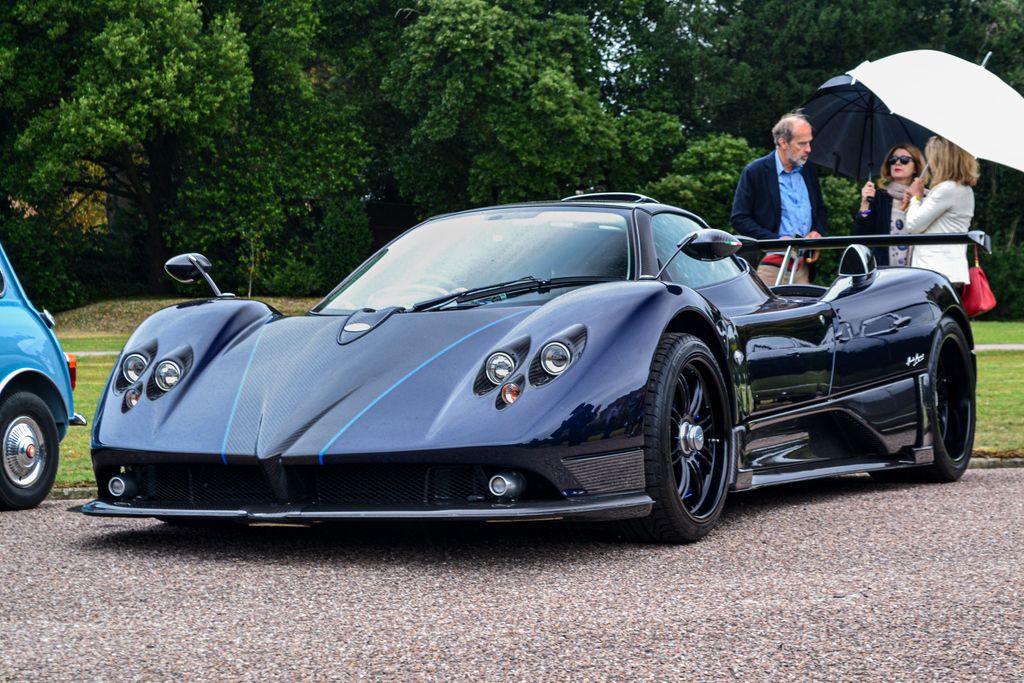
6. **Pagani Zonda**Horacio Pagani, a figure of legendary status in the supercar world, brought his visionary expertise from Lamborghini, where he was instrumental in the later development of the Countach and the Diablo, to establish his own company. The result was the Zonda, a true masterpiece of automotive manufacturing that captivated enthusiasts worldwide. Produced from 1999 until 2017, with a total of only 140 cars built, each Zonda is a testament to bespoke craftsmanship and extreme performance, powered by a specially engineered Mercedes-AMG V12 engine capable of churning out up to 760 horsepower.
Each Zonda is hand-crafted from advanced materials like carbon fiber and aluminum, alongside other lightweight composites, meticulously assembled to achieve one of the best power-to-weight ratios imaginable. This level of craftsmanship and adrenaline-inducing speed comes at an astronomical cost, with Zondas selling for more than a million dollars at the low end. Despite its global acclaim, the Pagani Zonda has never been federalized for widespread import and street legality in the United States. Its presence on American soil is almost exclusively facilitated by the ‘Show and Display’ rule, a unique provision that allows certain cars of particular historical or technological significance, produced in limited numbers, to be imported but with strict limitations on annual mileage. This stands in stark contrast to Pagani’s subsequent creation, the Huayra, which was designed from the outset to be fully compliant with U.S. regulations, highlighting the Zonda’s status as a magnificent, yet federally constrained, automotive icon.
Navigating the intricate landscape of automotive regulations has always presented a unique challenge for manufacturers and enthusiasts alike. Beyond the outright track-focused designs and deliberate safety omissions we’ve already explored, a different set of hurdles frequently prevented some of the world’s most desired performance vehicles from gracing American roads. These often involved evolving and increasingly stringent emissions requirements, crash safety standards that differed significantly from those in Europe or Japan, or even aftermarket modifications that inadvertently rendered an otherwise legal vehicle non-compliant. Yet, for many of these ‘forbidden fruits,’ the passage of time, coupled with a specific regulatory loophole known as the ’25-year rule’ or other unique pathways, has finally offered a glimmer of hope, allowing them to legally enter the United States.
Read more about: The 10 Supercars That Have Just Roared Into Classic Status This Year – And Why They’re Absolutely Legendary
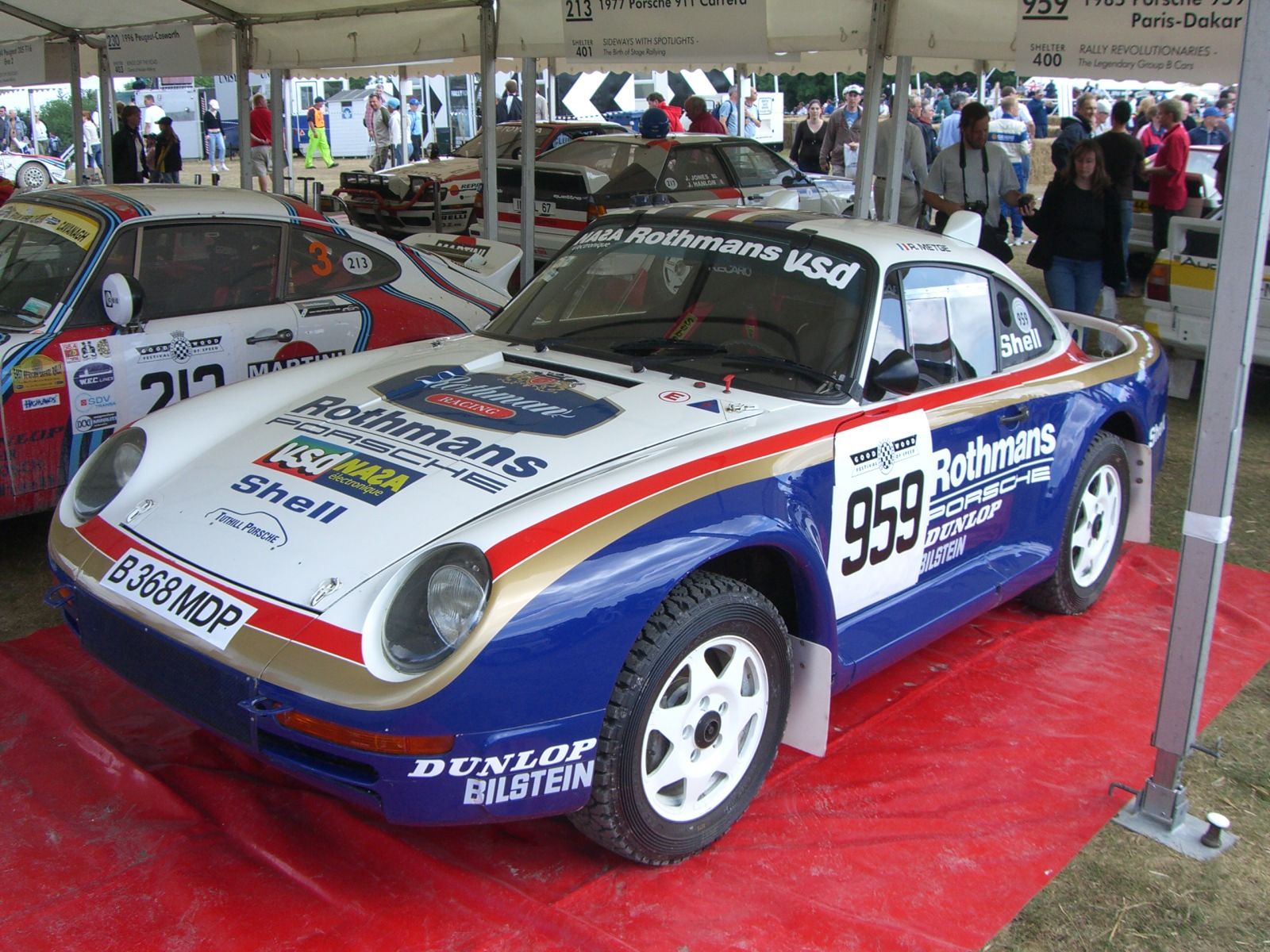
7. **Porsche 959** Often hailed by enthusiasts as the most advanced supercar of the 1980s, the Porsche 959 was a technological marvel, born from the ill-fated Group B racing series. According to Stutt Cars, this vehicle seamlessly integrated the digital age into its core, with sophisticated computers meticulously controlling the engine, turbos, suspension, and traction control. Its cutting-edge components and lightweight materials made it extraordinarily expensive, placing it firmly in the realm of the extremely wealthy, primarily in Europe.
Despite its global acclaim and the keen interest from affluent Americans like Microsoft founder Bill Gates, attempts to import the 959 were consistently thwarted by the then-new U.S. import regulations. Porsche, recognizing the immense effort and cost involved, had no desire to re-engineer the car to pass American standards. This undertaking would have required crash testing an astonishing 120 vehicles—an enormous expense considered commercially unjustifiable for the sale of only a handful of units in the United States.
Undaunted by these significant regulatory hurdles, a group of dedicated enthusiasts, as noted by Road and Track, worked tirelessly to find a legitimate pathway for these cars into the country. Their determined efforts ultimately led to the establishment of a new legislative provision: the ‘Show or Display’ rule. This unique law allows certain cars of particular historical or technological significance, produced in limited numbers, to be imported with the specific condition that they cannot be driven more than 2,500 miles annually. This ingenious workaround is precisely how Bill Gates and a select few others finally managed to acquire this ultimate Porsche.
Read more about: Buckle Up, Buttercup! These 15 Iconic Rides Totally Defined the ’70s – Did YOU Cruise in Any of Them?
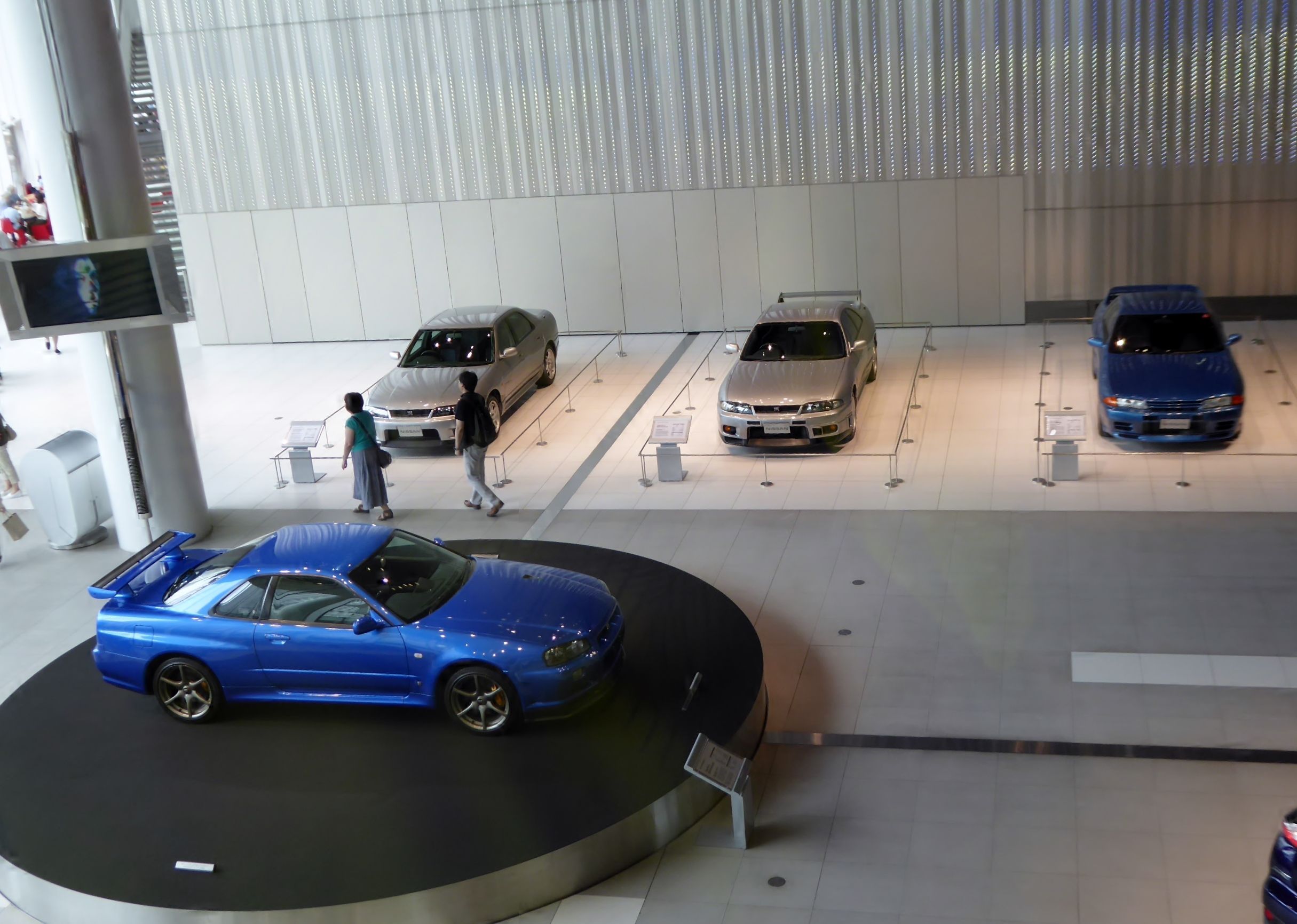
8. **Nissan Skyline R34 GT-R** The mystique surrounding certain legendary cars only intensifies when regulations prevent them from reaching eager enthusiasts. For the Nissan Skyline R34 GT-R, its exclusion from the U.S. market wasn’t due to excessive power, but rather its inability to meet the strict crash safety and emissions standards prevalent at the time. Despite its sophisticated all-wheel-drive system and twin-turbocharged engine, which delivered performance far superior to many contemporary competitors, these regulatory barriers kept it off American roads.
The R34 GT-R rapidly ascended to legendary status, becoming one of the most influential Japanese sports cars of its era, particularly bolstered by its appearances in the Gran Turismo video game and the popular Fast and Furious film franchise. For decades, American enthusiasts yearned for a legal way to own this iconic machine. The ’25-year import rule’ has finally provided that opportunity, with R34 models becoming eligible for import to the United States starting in January 2024 for specific models and model years.
The interior of the R34 GT-R was equally groundbreaking for its time. Long before digital dashboards became commonplace, it revolutionized performance monitoring with its innovative multifunction display, offering real-time metrics like turbo boost pressure, oil temperature, and g-forces. Heavily bolstered seats, upholstered in a distinctive blue-gray fabric, provided firm support during aggressive cornering, while the iconic three-spoke MOMO steering wheel was celebrated for its ergonomic excellence. Remarkably, unlike many performance cars of its era, the GT-R retained its rear seats, offering a surprising degree of practicality.
Car Model Information: 2017 Nissan Rogue SV
Name: Nissan Skyline GT-R
Caption: 2002 Nissan Skyline GT-R V·spec II (BNR34)
Manufacturer: Nissan
Production: unbulleted list
Assembly: unbulleted list
Class: Sports car
Related: unbulleted list
Transmission: unbulleted list
Predecessor: Nissan Skyline#BLRA-3 Skyline Sport
Successor: Nissan GT-R
Categories: 1970s cars, 1980s cars, 1990s cars, 2000s cars, 24 Hours of Le Mans race cars
Summary: The Nissan Skyline GT-R (Japanese: 日産・スカイラインGT-R, Hepburn: Nissan Sukairain GT-R) is a Japanese sports car based on the Nissan Skyline range. The first cars named “Skyline GT-R” were produced between 1969 and 1972 under the model code KPGC10, and were successful in Japanese touring car racing events. This model was followed by a brief production run of second-generation cars, under model code KPGC110, in 1973.
After a 16-year hiatus, the GT-R name was revived in 1989 as the BNR32 (“R32”) Skyline GT-R. Group A specification versions of the R32 GT-R were used to win the Japanese Touring Car Championship for four years in a row. The R32 GT-R also had success in the Australian Touring Car Championship, with Jim Richards using it to win the championship in 1991 and Mark Skaife doing the same in 1992, until a regulation change excluded the GT-R in 1993. The technology and performance of the R32 GT-R prompted the Australian motoring publication Wheels to nickname the GT-R “Godzilla” in its July 1989 edition. Wheels then carried the name through all the generations of Skyline GT-Rs, most notably the R34 GT-R, which they nicknamed “Godzilla Returns”, and described as “The best handling car we have ever driven”. In tests conducted by automotive publications, R34 GT-R have covered a quarter of a mile (402 metres) in 12.2 seconds from a standing start time and accelerated from 0–100 km/h (0–62 mph) in 4.4 seconds.
The Skyline GT-R became the flagship of Nissan performance, showing many advanced technologies including the ATTESA E-TS all-wheel drive system and the Super-HICAS four-wheel steering. Today, the car is popular for import drag racing, circuit track, time attack and events hosted by tuning magazines. Production of the Skyline GT-R ended in August 2002. The car was replaced by the GT-R (R35), an all-new vehicle based on an enhanced version of the Skyline V36 platform. Although visibly different, the two vehicles share similar design features and are manufactured in the same factory.
The Skyline GT-R was never manufactured outside Japan, and the sole export markets were Hong Kong, Singapore, Australia and New Zealand, in 1991, and the UK (in 1997, due to the Single Vehicle Approval scheme). They are also popular across the world as used Japanese imports.
Despite this, the Skyline GT-R has become an iconic sports car as a grey import vehicle in the Western world (mainly the United Kingdom, Australia, New Zealand, South Africa, Ireland, Canada, and the United States). It has become notable through pop culture such as The Fast and the Furious, Initial D, Shakotan Boogie, Tokyo Xtreme Racer, Wangan Midnight, Need for Speed, Forza, Driving Emotion Type-S, Test Drive, and Gran Turismo.
In 2019, Nismo announced that it would resume production of spare parts for all generations of the Skyline GT-R, including body panels and engines.
Get more information about: Nissan Skyline GT-R
Buying a high-performing used car >>>
Brand: Nissan Model: Skyline R34 GT-R
Price: $12,988 Mileage: 83,421 mi.
Read more about: Remember Your First Car? The 12 Iconic Models That Defined a Generation

9. **Lamborghini Strosek Diablo** While the standard Lamborghini Diablo was readily available and street-legal in the United States, an aftermarket creation by German tuner Vittorio Strosek pushed regulatory boundaries with its radical transformation. The Strosek Diablo, distinguished by its unique “Arrow” body kit, was instantly recognizable. Its illegality stemmed not from its prodigious power, but from Strosek’s significant aftermarket modifications to critical components such as the headlights, side mirrors, and other safety equipment, rendering it non-compliant with U.S. import regulations. The base Diablo maintained its legal status, but these extensive aftermarket alterations disqualified the custom version for American roads.
Vittorio Strosek, an automotive designer active since the 1970s, often collaborates with manufacturers on new car designs and special editions. His company also crafts custom variations of select vehicles, including the Diablo. The Strosek Diablo is a truly unique machine, featuring clever styling changes that set it apart. These modifications included the replacement of standard headlights with small dual lamps in streamlined housings, rounded bumpers that softened the car’s aesthetic, and a modified rear spoiler. Crucially, the peculiar side view mirrors, mounted unusually high on the window frame, and the distinctive headlights did not adhere to U.S. guidelines.
Due to these specific modifications, there was no simple way to make the Strosek Diablo legal for export without reverting it to its factory-original specifications. Beyond the exterior, each Strosek Diablo’s interior told a unique story through custom stitching patterns and personalized color schemes, reflecting the original owners’ tastes. A smaller, more aggressive steering wheel replaced the standard unit, enhancing visibility and tactile feedback, while custom gauges with distinctive lighting added to the theatrical driving experience. Today, as some of these highly customized machines reach the ’25-year rule’ eligibility, they can be legally imported, though those modified after 1998 still face a waiting period.
Car Model Information: 1994 Lamborghini Diablo VT
Name: Lamborghini Diablo
Caption: Lamborghini Diablo SE30
Manufacturer: Lamborghini
Production: 1990–2001
Assembly: Sant’Agata Bolognese
Designer: Marcello Gandini,Tom Gale (designer),Luc Donckerwolke
Class: Sports car
BodyStyle: coupé
Related: Vector M12
Layout: Longitudinal engine,mid-engine design,rear-wheel drive
Engine: Lamborghini_V12#First_generation
Transmission: manual transmission
Wheelbase: 2650 mm
Abbr: on
Length: 4460 mm
Width: 2040 mm
Height: 1105 mm
Weight: ubl
Predecessor: Lamborghini Countach
Successor: Lamborghini Murciélago
Doors: Scissor doors
Categories: All articles with unsourced statements, Articles with short description, Articles with unsourced statements from September 2022, CS1 Italian-language sources (it), CS1 Japanese-language sources (ja)
Summary: The Lamborghini Diablo (meaning “devil” in Spanish), is a series of high-performance V12, rear mid-engined sports cars in the supercar market segment, built by Italian automobile manufacturer Lamborghini from 1990 through 2001. It is the first production Lamborghini with a top speed in excess of 200 mph (322 km/h).
In 1993, the Diablo VT (for ‘Viscous Traction’) became Lamborghini’s first all-wheel drive production sportscar. The car retained its rear-wheel drive character, but a computer-modulated system could direct up to 25% of the engine’s torque to the front wheels in case of rear-axle slip, to improve the car’s handling. In 1995, Lamborghini also began building their first open-top V12, in the form of a Diablo roadster. During the later years, a number of special editions were built, typically in very small numbers.
After the end of its production run in 2001, the Diablo was replaced by the Lamborghini Murciélago.
Get more information about: Lamborghini Diablo
Buying a high-performing used car >>>
Brand: Lamborghini Model: Diablo
Price: $300,000 Mileage: 37,673 mi.

10. **Porsche 964 Carrera RS** Porsche has a storied history of producing special edition cars that prioritize speed and driving purity over traditional comfort. The 964 Carrera RS, introduced in 1991, epitomized this philosophy. It was a stripped-down model meticulously engineered to optimize power-to-weight for maximum performance. While its 260 horsepower engine was impressive, it was the ruthless pursuit of weight savings that truly elevated its capabilities, making it a formidable machine on the track and an incredibly engaging driver’s car.
The interior of the 964 Carrera RS was a testament to this singular focus on performance. It was as spartan as possible, with no carpet, power windows, power steering, air conditioning, or stereo—eliminating anything not deemed essential for going fast. This uncompromising approach was tailored specifically for European enthusiasts, as Porsche determined that the effort to certify these models for U.S. regulations would not be commercially viable. Consequently, all original 964 Carrera RS models remained in the Old World for their first 25 years.
Acknowledging American demand, Porsche did offer a somewhat diluted version for the U.S. market, known as the RS America, which retained more comfort features and remained heavier than its European counterpart. However, with the passage of 25 years, the genuine 964 Carrera RS models can now be legally imported, finally allowing American enthusiasts to experience this raw, uncompromised driving machine. Inside, lightweight racing seats replaced standard power-adjustable units, door panels featured simple pull straps instead of conventional handles, and sound-deadening materials were ruthlessly removed, all in the relentless pursuit of saving every possible gram.
Car Model Information: 2017 Nissan Rogue SV
Name: Porsche 911
Caption: The 1 millionth 911 produced on display at Volkswagen Group Forum, Berlin
Designer: Ferdinand Alexander Porsche
Manufacturer: Porsche
Production: September 1964 – present
Assembly: Stuttgart,Baden-Württemberg
Class: Sports car
BodyStyle: unbulleted list
Related: unbulleted list
Layout: Rear-engine design,rear-wheel drive
Predecessor: Porsche 356
Categories: 1970s cars, 1980s cars, 1990s cars, 2+2 coupés, 2000s cars
Summary: The Porsche 911 model series (pronounced Nine Eleven or in German: Neunelf) is a family of German two-door, high performance rear-engine sports cars, introduced in September 1964 by Porsche AG of Stuttgart, Germany. Now in its eighth generation, all 911s have a rear-mounted flat-six engine, and usually 2+2 seating, except for special 2-seater variants. Originally, 911s had air-cooled engines, and torsion bar suspension, but the 911 has been continuously enhanced, and evolved across generations. Though the 911 core concept has remained largely unchanged, water-cooled engines were introduced with the 996 series in 1998, and front and rear suspension have been replaced by Porsche-specific MacPherson suspension up front, and independent multi-link rear suspension.
The 911 has been raced extensively by private and factory teams, in a variety of classes. It is among the most successful competition cars. In the mid-1970s, the naturally aspirated 911 Carrera RSR won world championship races including Targa Florio and the 24 Hours of Daytona. The 911-derived 935 turbo also won the 24 Hours of Le Mans in 1979. Porsche won the World Championship for Makes in 1976, 1977, 1978, and 1979 with 911-derived models.
In a 1999 poll to determine the Car of the Century, the 911 ranked fifth — one of two in the top five that had remained continuously in production (the original Beetle remained in production until 2003). The one millionth example was manufactured in May 2017 and is in the company’s permanent collection.
Get more information about: Porsche 911
Buying a high-performing used car >>>
Brand: Porsche Model: 964 Carrera RS
Price: $12,988 Mileage: 83,421 mi.
Read more about: Buckle Up, Buttercup! These 15 Iconic Rides Totally Defined the ’70s – Did YOU Cruise in Any of Them?
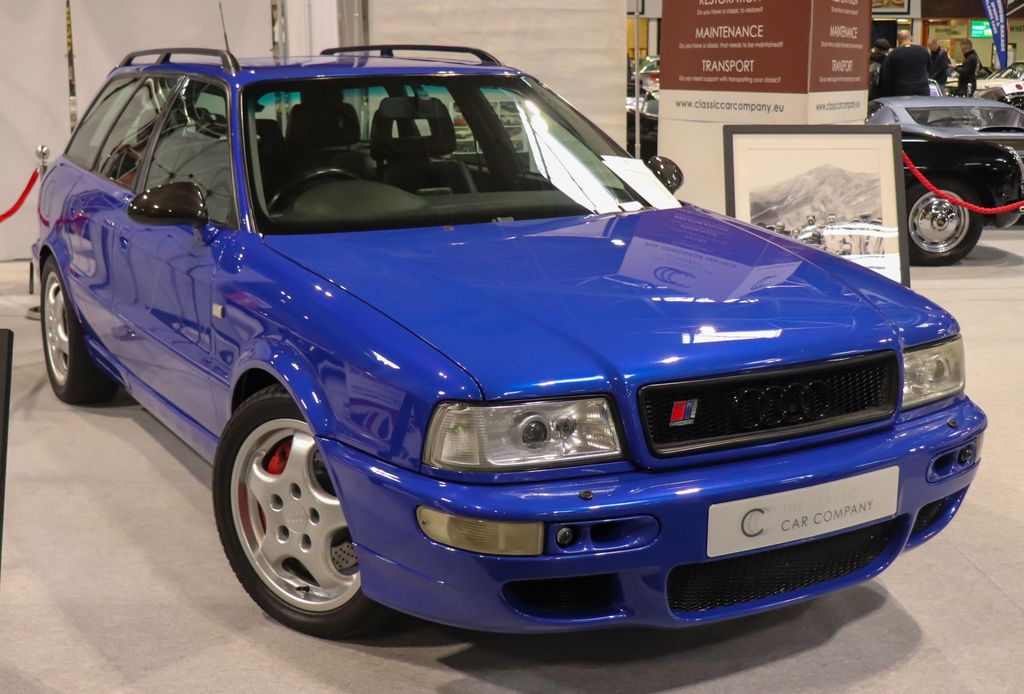
11. **Audi RS 2 Avant** Challenging preconceived notions about family vehicles, the Porsche-tuned Audi RS 2 Avant was a pioneering performance wagon that defied convention. This remarkable machine could accelerate from 0-60 mph in a blistering 4.8 seconds, a feat unheard of for a station wagon in its era. Its power came from a potent 2.2-liter turbocharged 5-cylinder engine, delivering exceptional performance wrapped in a surprisingly practical package.
The RS 2 Avant was never formally “banned” in the United States in the typical sense; rather, it was simply never certified to meet specific U.S. emissions standards, preventing its widespread import. It was also initially refused under the ‘Show & Display’ import rules, highlighting the unique regulatory challenges it faced. This pioneering vehicle represented the unfulfilled potential of high-performance wagons in the American market, a compelling solution for enthusiast parents seeking corner-carving thrills alongside practicality.
However, like many other coveted European models, the Audi RS 2 Avant has now gained legality through the ’25-year rule,’ allowing these impressive wagons to be imported. The cabin of the RS 2 Avant perfectly blended sleeper performance with family functionality. Recaro sport seats, upholstered in a combination of Alcantara and leather, provided excellent support for spirited driving while maintaining comfort for longer journeys. The three-spoke steering wheel, bearing Porsche’s unmistakable influence, offered precise feedback that belied the car’s practical body style, with carbon fiber accents and aluminum pedals subtly hinting at its performance credentials without compromising Audi’s expected premium feel.
Car Model Information: 2017 Nissan Rogue SV
Name: Audi RS 2 Avant (8C)
Manufacturer: Audi
Production: March 1994 – July 1995
Assembly: Zuffenhausen
Successor: Audi RS 4
Class: Entry-level luxury car
BodyStyle: estate car
Layout: longitudinal engine,Front-engine, four-wheel-drive layout
Platform: Volkswagen Group B platform#B4
Engine: List of discontinued Volkswagen Group petrol engines#2.2 R5 20v T 232kW (RS2)
Transmission: manual transmission
Wheelbase: 2611 mm
Abbr: on
Length: 4580 mm
Width: 1694 mm
Related: Audi_80#B4_(1991%E2%80%931996)
Powerout: 315 PS
Sp: uk
Categories: All-wheel-drive vehicles, All articles needing additional references, All articles with unsourced statements, All pages needing factual verification, Articles needing additional references from December 2016
Summary: The Audi RS 2 Avant is a high-performance version of the Audi 80 Avant estate car, manufactured from March 1994 to July 1995. Collaboratively designed as a joint venture between Audi AG and Porsche and based on Audi’s B4/8C platform, it received the internal designation of P1. It featured the most powerful version of Audi’s inline-five cylinder turbocharged engine. It represents Audi’s first “RS” model, and the first of their high-performance Avants.
It is a limited-edition model that was not widely exported outside of Europe, except in limited quantity to Hong Kong, South Africa, Brazil, and New Zealand. However, the RS 2 has amassed a cult following worldwide including Canada and the United States where the RS 2 was not officially imported due to certification costs and weak brand performance in the early 1990s. RS 2s have now been imported to Canada and USA as both allow non-conforming vehicles to be imported once they reach the age of 15 and 25 years respectively.
Get more information about: Audi RS 2 Avant
Buying a high-performing used car >>>
Brand: Audi Model: RS 2 Avant
Price: $12,988 Mileage: 83,421 mi.
Read more about: The 14 Most Fuel-Efficient Cars of 2025: Expert Insights to Save You Thousands Annually
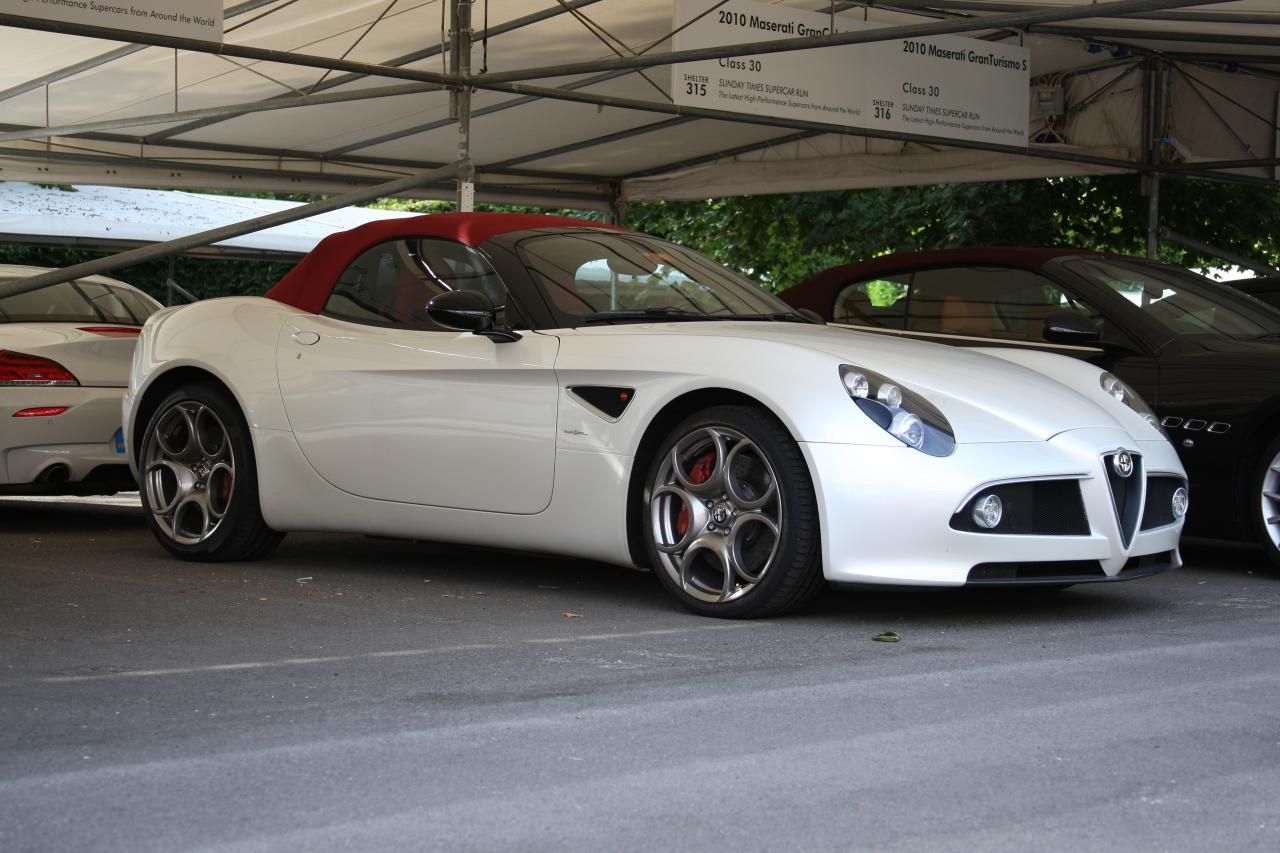
12. **Alfa Romeo 8C Spider Roadster** The Alfa Romeo 8C Spider Roadster is a prime example of automotive beauty encountering regulatory complexities. This striking convertible, powered by a Ferrari-derived 4.7-liter V8, produces an intoxicating exhaust note that stands out even among other exotic cars. Alfa Romeo meticulously designed the 8C with flowing curves and proportions that many automotive enthusiasts consider among the most beautiful in modern sports car history, showcasing the pinnacle of Italian design and engineering.
Initially, significant differences between European and U.S. crash safety standards presented a formidable barrier, preventing the widespread importation of the 8C Spider without extensive and costly modifications. This meant that while a limited number of its hardtop counterpart, the 8C Competizione, were legally imported as part of Alfa Romeo’s soft return to the U.S. market in 2008, the convertible version faced a prolonged period of ineligibility. However, unlike many other vehicles on this list, a unique regulatory pathway opened for the 8C Spider.
In 2016, the National Highway Traffic Safety Administration (NHTSA) made a notable decision, backtracking on its earlier stance. The agency formally announced in the official federal register that the Spider was “substantially similar” to the already legal hardtop and therefore eligible for importation. This significantly reduced the usual 25-year limitation, allowing a small number of these convertibles to be legally imported to the U.S. relatively quickly. Inside, the 8C Spider’s cabin celebrates the dying art of Italian handcraftsmanship, featuring hand-stitched leather on the sport seats and dashboard, complemented by carbon fiber and aluminum accents. The driver-oriented dashboard with classic round gauges prioritizes crucial information, while the open-top configuration allows occupants to fully immerse themselves in the sensory experience of the powerful V8 engine.
Car Model Information: 2017 Nissan Rogue SV
Name: Alfa Romeo 8C Competizione,Alfa Romeo 8C Spider
Manufacturer: FCA Italy
Assembly: Modena
Production: 2007–2009 (coupé),829 produced
Class: Sports car
BodyStyle: coupé
Layout: Front-engine, rear-wheel-drive layout#Front mid-engine, rear-wheel-drive layout
Engine: 4691 cc
Abbr: on of torque
Order: Ferrari F136 engine#Alfa Romeo,V8 engine
Transmission: Electrohydraulic manual transmission
Wheelbase: 2646 mm
Length: 4381 mm
Width: 1894 mm
Height: 1341 mm
Weight: 1585 kg
Predecessor: Alfa Romeo SZ
Powerout: 331 kW
Related: Maserati Quattroporte V,Maserati GranTurismo,Maserati GranCabrio,Alfa Romeo BAT#BAT 11,Alfa Romeo Pandion,Alfa Romeo Disco Volante by Touring
Designer: Wolfgang Egger
Categories: 2010s cars, Alfa Romeo vehicles, All articles with dead external links, Articles with dead external links from September 2024, Articles with short description
Summary: The Alfa Romeo 8C Competizione is a sports car produced by Italian marque Alfa Romeo between 2007 and 2010. It was first presented as a concept car at the 2003 Frankfurt Motor Show. The name refers to the eight-cylinder (cilindro in Italian) engine (8C) and Alfa Romeo’s racing pedigree (Competizione, Italian for ‘competition’). The company received over 1,400 orders for the 8C after the official announcement that the car would enter production. However, only 500 customers ended up with the 8C Competizione and another 329 with the 8C Spider, bringing the production total to 829 cars.
Get more information about: Alfa Romeo 8C Competizione
Buying a high-performing used car >>>
Brand: Alfa Romeo Model: 8C Spider Roadster
Price: $12,988 Mileage: 83,421 mi.
Read more about: Beyond the Legends: 10 Obscure 1960s Sports Cars Only True Collectors Recognize
From track-focused titans deliberately devoid of road-legal amenities to performance legends ensnared by differing emissions and crash safety standards, the journey through these banned supercars reveals a fascinating interplay of engineering prowess and regulatory pragmatism. The ’25-year rule’ and specific regulatory amendments have opened the gates for many, transforming once forbidden dreams into attainable realities for dedicated enthusiasts. These machines are not just vehicles; they are monuments to innovation, testaments to the enduring allure of the unattainable, and living histories of how automotive ambition continually challenges, and sometimes redefines, the boundaries of the possible on the world’s roads. Their stories underscore that for the true automotive aficionado, the passion for these engineering marvels transcends borders and regulations, only growing stronger with time.


